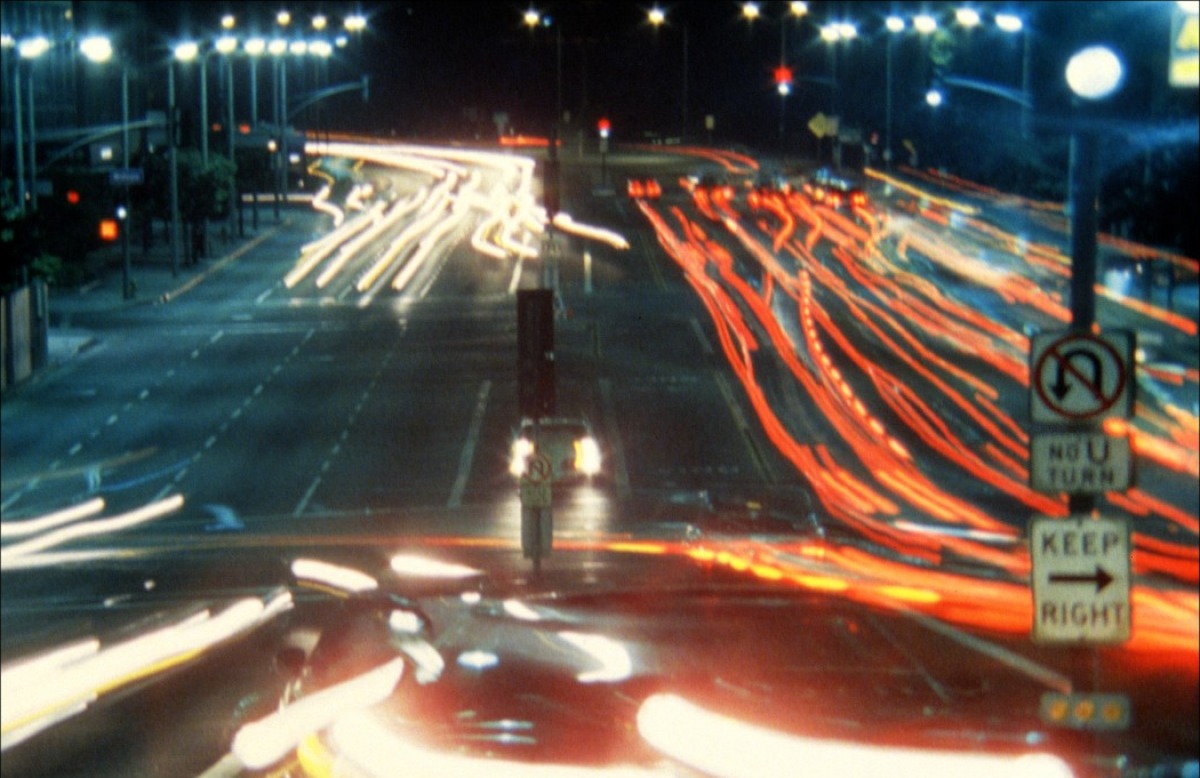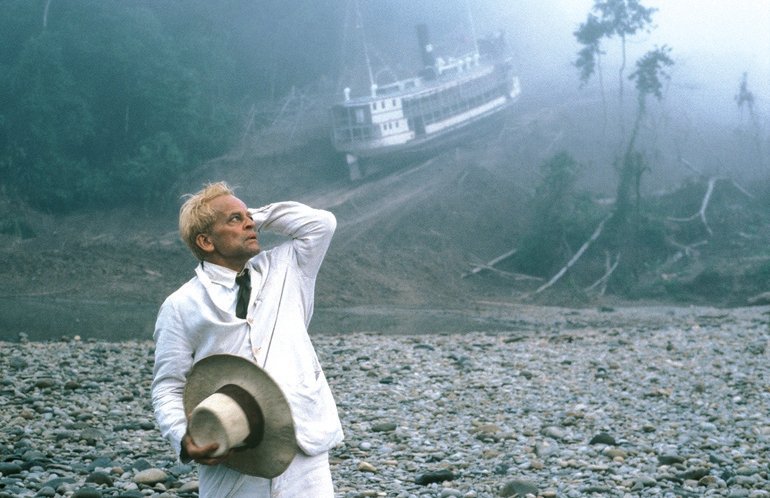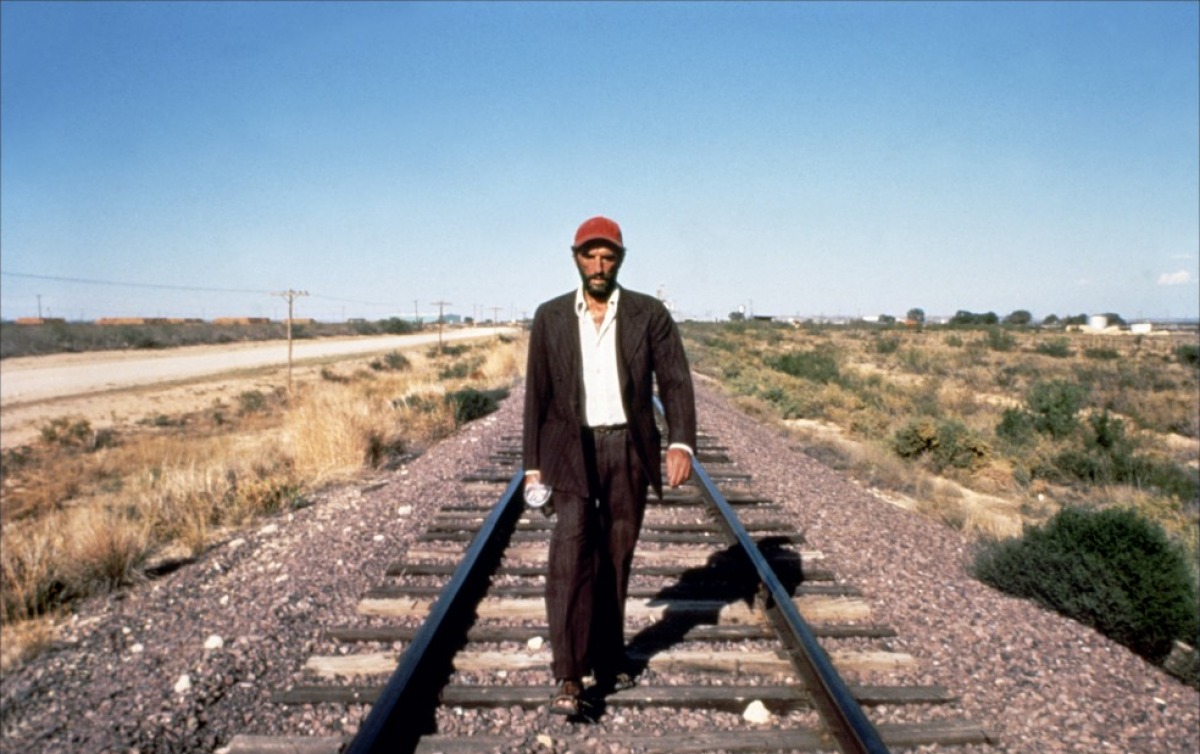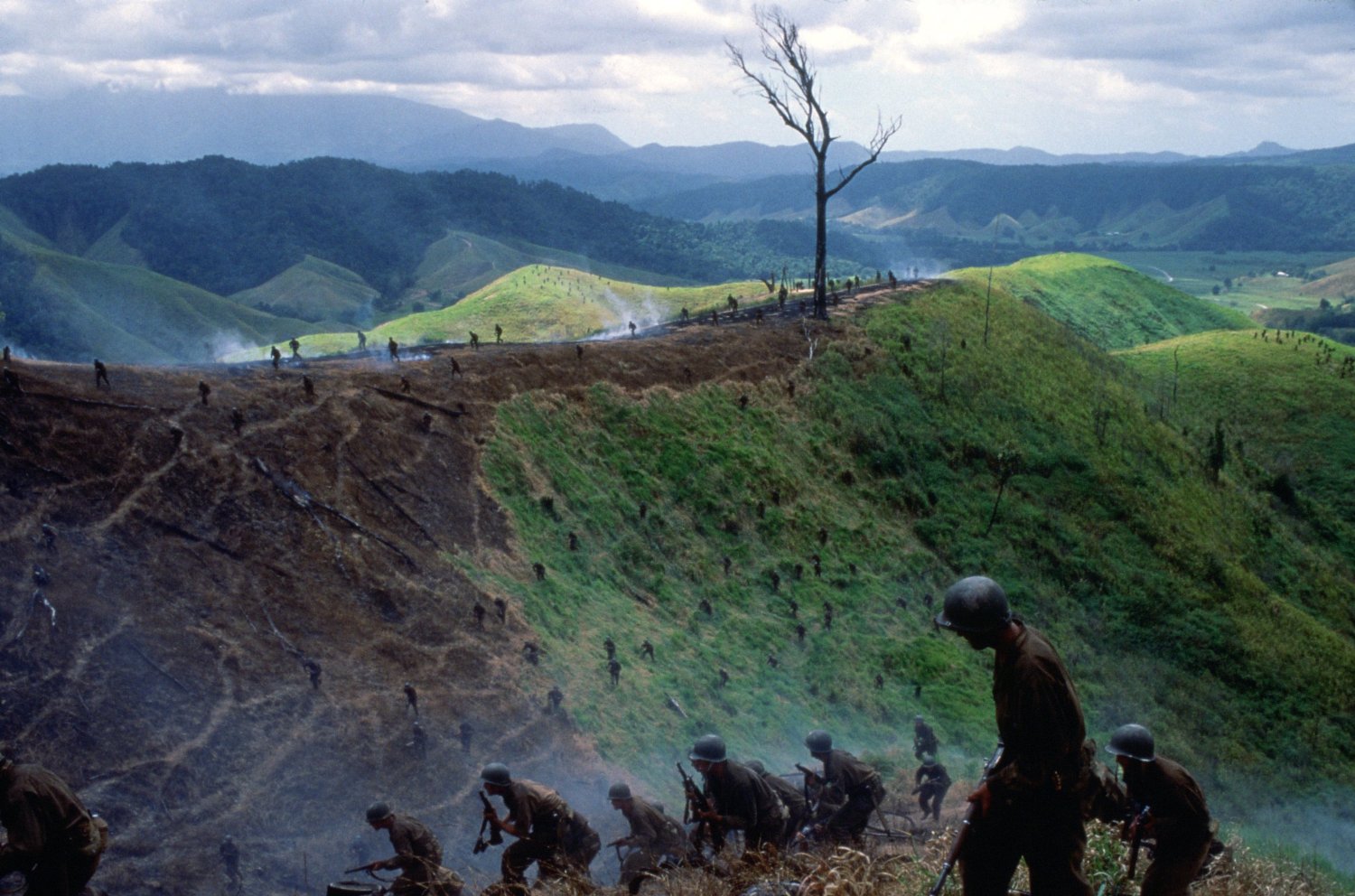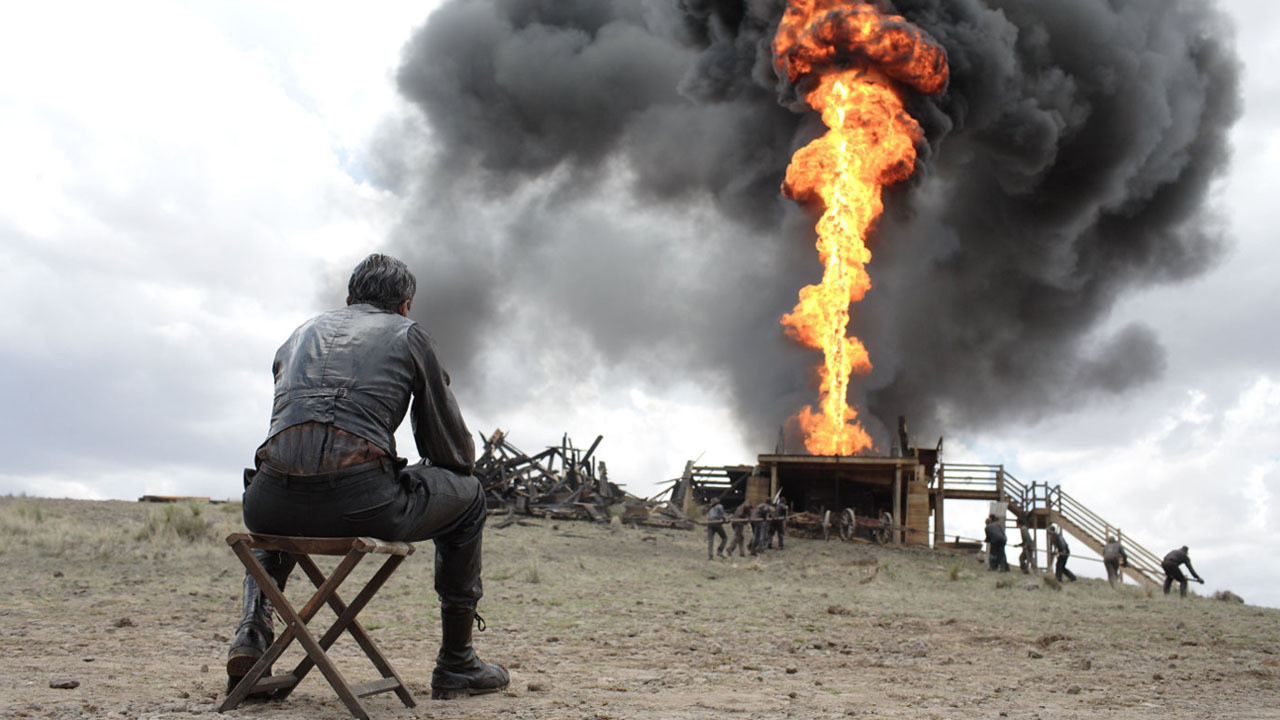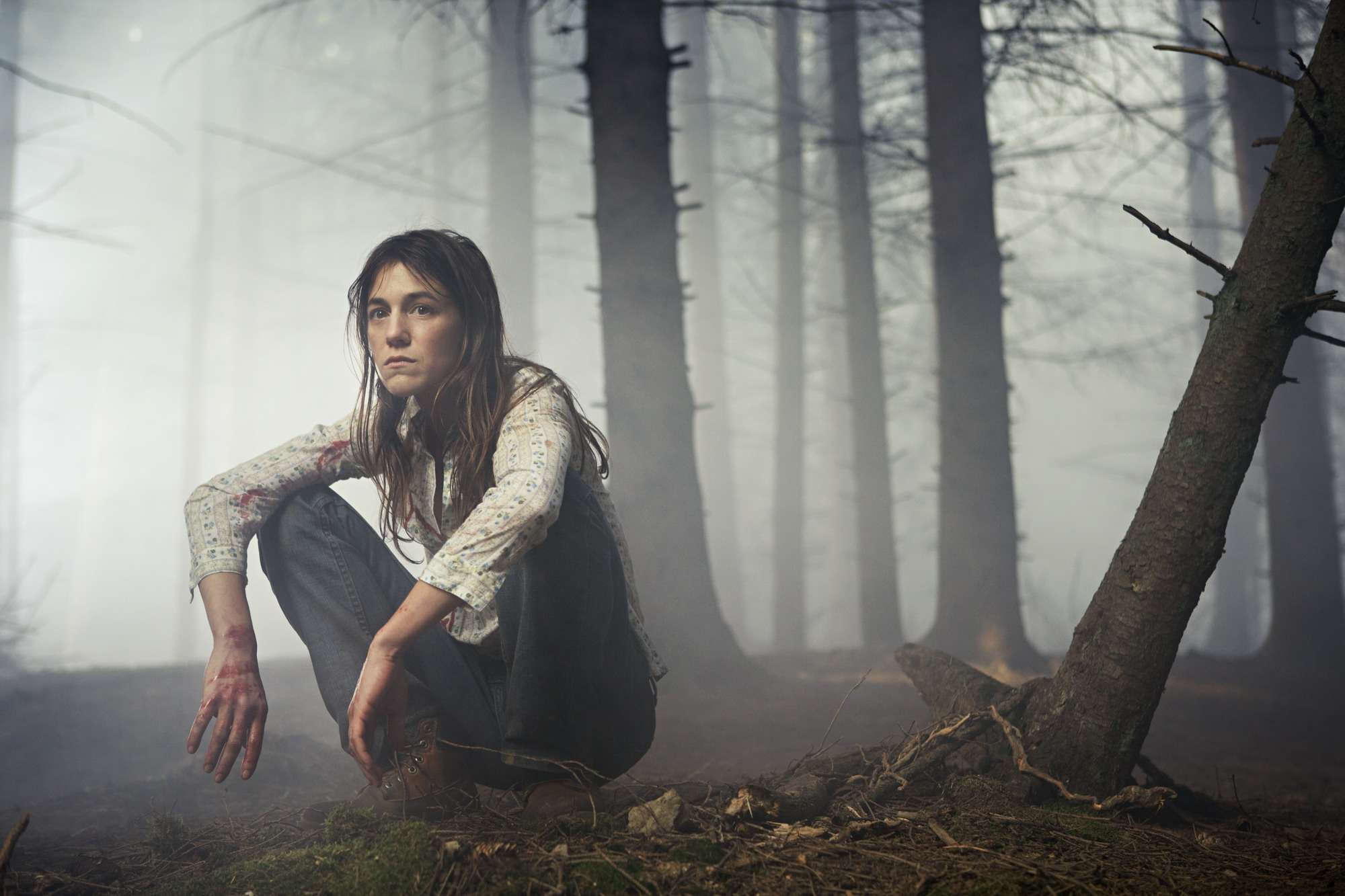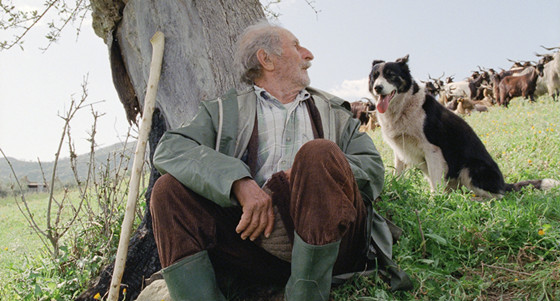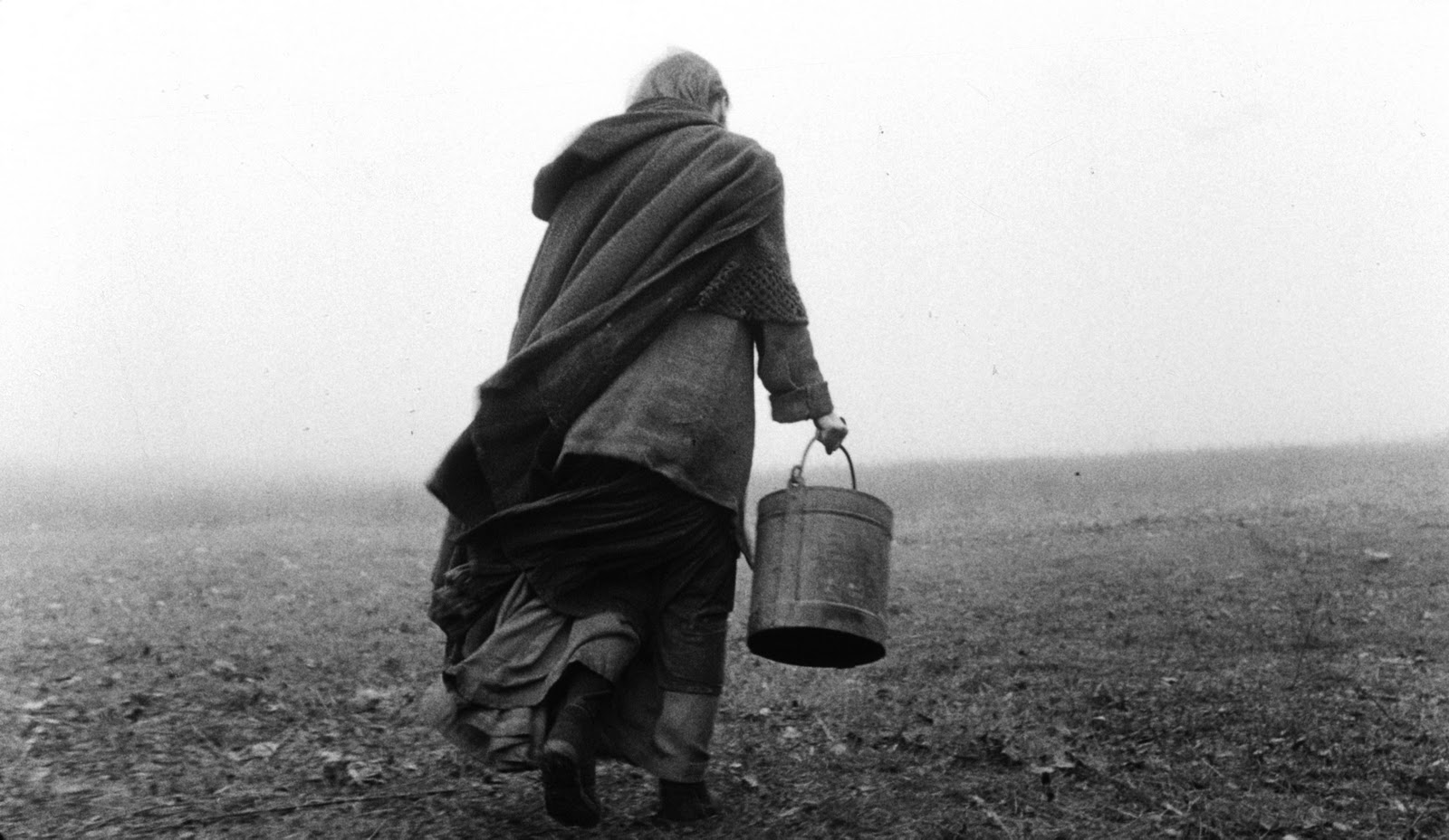18. Koyaanisqatsi (1982, Godfrey Reggio)
In Godfrey Reggio’s visionary non-narrative film, the cityscape of urban life is highlighted with time-lapse photography and an hypnotic score by Philip Glass.
Koyaanisqatsi, meaning “unbalanced life” in the Hopi language, contrasts hectic, polluted city environments with the cycles of nature. Through the use of time-lapse and slow-motion photography, the pace of modern, industrial city life takes on a frenzied momentum, climaxed by a Hopi prophecy for the future.
Through the use of riveting cinematography by Ron Fricke and editing by Fricke and Alton Walpole, the film focuses on humanity within our man-made landscape. Amidst the feverish speed of life portrayed by the time-lapse city streets and factories, Reggio features people as well.
Throughout the film, we see portaits of citydwellers, looking rather blank, soulless, and/or haggard, as if to suggest that our man-made landscape has yielded an ungrounded emptiness within us that can only be remedied by restoring balance to our Earth.
19. Fitzcarraldo (1982, Werner Herzog)
Werner Herzog’s bold film in which he and his crew pulled a steamship over a mountain, is all about man’s battle with the elements. Achieving such a difficult task, the making of the film powerfully displays that theme alongside the film itself.
At the turn of the century, visionary Irishman, Brian Sweeney Fitzgerald (Klaus Kinski), also known as Fitzcarraldo, dreams of building an operahouse in his adopted country of Peru. In order to fund such a dream, Fitzcarraldo decides to join in the rubber trade, traveling to the uncharted territories deep in the Amazon jungle.
After his crew abandon him and his seemingly impossible journey, a slew of native Pervians are drawn to his ship (from the opera he blasts from his victrola). He uses the natives to help him construct an intricate system of levers and pulleys in order to drag his steamboat over a large hill and into the rubber territory of the jungle, cut off from the river.
Using no special effects and plenty of man-power, Herzog himself fought against the elements to tell his story. Based on true events, the film tells the tale of an unyielding man battling nature to achieve his grandiose dreams.
20. Paris, Texas (1984, Wim Wenders)
Directed by the poetic Wim Wenders, Paris, Texas uses the landscape of the American Southwest to frame the story of an emotionally traumatized man in search of his runaway wife.
After four years of wandering the desert, a ragged Travis Henderson (Harry Dean Stanton), is reunited with his family: his brother Walt (Dean Stockwell), Walt’s wife Anne (Aurore Clément), and Travis’ son Hunter (Hunter Carson).
It is revealed that due to the disappearance of Travis’ wife Jane (Nastassja Kinski) four years earlier, the emotionally shocked Travis left their young son to the care of his brother. Travis begins to bond with Hunter, and the two of them leave to find Jane, whom Anne believes is in Huston, Texas.
The empty desert landscape is an isolating comfort for Travis, who, after his wife’s disappearance, cannot bear to be around civilization. After his four year departure in the desert, he can barely speak, almost animal-like in nature. Shot by the masterful Robby Müller, the landscape’s bleakness outlines the emptiness that Travis is left with after Jane leaves him.
21. The Thin Red Line (1998, Terrence Malick)
In Malick’s meditative war epic, the landscape is beautiful and serene, as well as ominous and full of danger. Filmed with an all star ensemble that includes Sean Penn, Woody Harrelson, Nick Nolte, and Elias Koteas, Malick blends poetic reminiscence with action and brutality.
During World War II a battalion of solidiers stationed in the South Pacific defend the area from the Japanese. Amidst the fighting, the countryside remains beautiful, triggering memories and visions that the various solidiers have of home. The battle at hand is over the Japanese-occupied Hill 210, which the stubborn Lieutenant Colonel Tall (Nick Nolte) is determined to conquer. He leads his men up the ridge, killing some and traumatizing most.
Faced with the horrors of war, the distressed men find refuge in the beauty of the country surrounding them. One Army Private, Witt (Jim Caviezel), who refuses to lose his sense of self in the mass of the Army, goes AWOL. He instead loses himself in the landscape: the crystal blue oceans, mossy green forests, and simple lifestyle of the area’s tribal people. With John Toll’s gorgeous cinematography, Malick captures the bittersweet beauty of bravery, longing, and death.
22. There Will Be Blood (2007, Paul Thomas Anderson)
In Paul Thomas Anderson’s epic drama, the land and its resources, namely oil, is a key force for the characters. The main character is driven primarily by his thirst for weath and power over the oil-rich land.
The film details the rise and fall of merciless oil man Daniel Plainview (Daniel Day-Lewis) during the turn of the century into the 1920s. After struggling as a miner, Plainview strikes upon oil and begins a drilling company. He adopts an infant son belonging to one of his workers killed in an oil accident in order to appear as a family man to his investors. Even Plainview’s decision to adopt a son is all in service of his greed for land and oil.
A local young man, Paul Sunday (Paul Dano), approaches Plainview one day telling him there’s oil on his family’s farm. Plainview visits the Sunday family to inquire about buying their land, but Paul’s twin brother Eli (also Paul Dano), the vehement young pastor in the town, is leary and asks Plainview to up the price in order to serve his church. Plainview reluctantly agrees, beginning his and Eli’s tense relationship.
The landscape of the film is mostly barren desert, save for the geisers of oil that erupt, drenching the land and characters in thick black muck. As lucrative as it is, the oil can also be dangerous and destructive. In one scene, a rig erupts with oil, devouring the platform in an immense, hellish fire and deafening Plainview’s son. Even in its devastating majesty, the land is still something that Plainview’s tenacious spirit desires to exploit.
23. Antichrist (2009, Lars Von Trier)
In Lars Von Trier’s horrific story, the land is a haunting and fearsome force of nature. A nameless man and woman (Willem Dafoe and Charlotte Gainsbourg) explore the depths of evil within the terrifying forest named Eden.
After the accidental death of their young son, a man and woman retreat to an isolated cabin in Eden in order to confront the woman’s darkest fears.
The woman is horrified of the woods; Her emotions are made physical as she feels her feet burning while walking through the forest. Her husband, a psychotherapist, is determined to treat his wife’s anxieties himself with exposure therapy. As they stay there, the couple become increasingly distressed by the environment. The husband sees frightening visions of animals, while the wife beings to exhibit brutal sexual behaviors.
Using surreal imagry, symbols, and mythology, Von Trier depicts a supernatural force within the landscape. The landscape is a place that brings out the woman’s primodial urge for destruction. As a physically self-destructive fox warns Willem Dafoe’s character, in this environment “chaos reigns.”
24. Le Quattro Volte (2010, Michelangelo Frammartino)
This largely silent on four stages of existence, is inspired by Pythagoras’ belief in reincarnation of the human soul into animal, vegetable, and mineral until it ultimately returns to the the immortal realm.
The film follows an aging Italian goatherder who falls ill and dies. Upon his death, the film follows the birth, life, and death of one of the man’s goats. The goat dies near a tree, which we then follow as it thrives and eventually is cut down by the townspeople and erected in the town square in a ceremonial process. After the tree is burned, it turns to charcoal, reuniting the essence of man, goat, tree, and ash to the elements.
Michelangelo Frammartino’s debut feature film is haunting in its silence and evocative implications of the nature of life and death. The landscape is in the forefront here, a reminder of where we come from and what we eventually shall return to.
25. The Turin Horse (2011, Béla Tarr and Ágnes Hranitzky)
Béla Tarr’s slow moving mood piece evokes the story that sparked Nietzsche’s mental collapse of a man beating a horse on the streets of Turin. The story of the film, is of the horse, the man, and his daughter as they fight for survival in a remote cabin amidst the unbridled winds that whip the barren farmland where they live.
An old and disabled man (János Derzsi) rides a cart pulled by a slow, stubborn horse. A strong gale surrounds them as they find their way home, where the man’s able bodied daughter (Erika Bók), unsaddles the horse and helps her father into their bare and rustic cabin. The film follows the chiefly silent father and daughter duo in their repetitive, day to day tasks.
The landscape in this film is harsh and ultimately uninhabitable. Its bleakness, captured in beautiful black and white cinematography full of long roving shots, holds the characters within this stark limbo. In this land, the characters must struggle, and with their struggles we are faced with a Nietzschean question as to the purpose behind these struggles for survival.
Author Bio: Esther Zeilig is a graduate from UCLA’s School of Film and Television, with an emphasis in Cinematography. She spends her free time doing what she loves: watching film, working on her photography, and snuggling with her cats.
